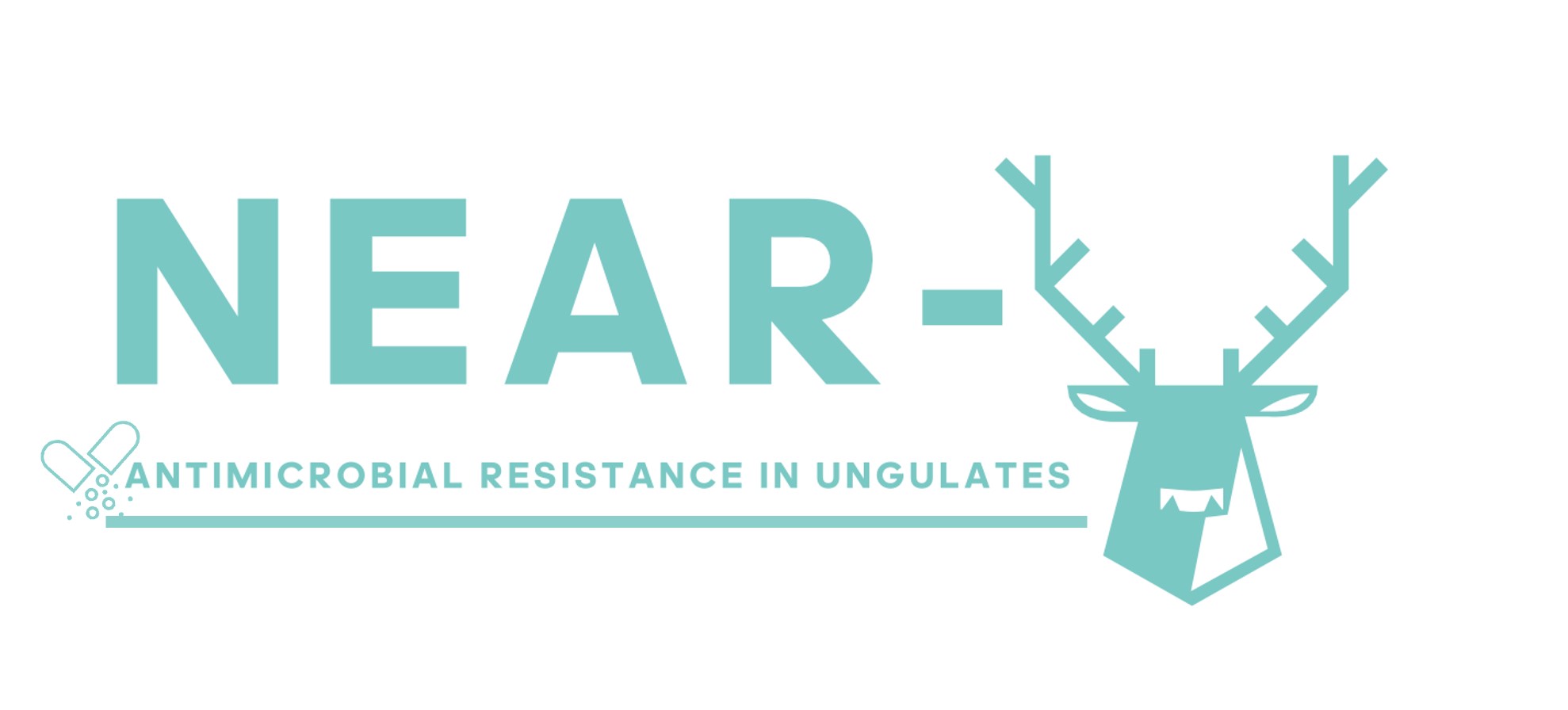
Antimicrobial resistance (AMR) is a significant threat to human health, food safety and the global economy, yet knowledge concerning AMR bacteria circulating in wildlife remains relatively unknown. Our prior research at EcoARUn demonstrated the presence of AMR bacteria in wild ungulates, raising concerns about their ability to act as reservoirs and dispersers of AMR. As a follow-up, NEAR-U will use the most widespread wild ungulates in Portugal as models to understand AMR dynamics in the wildlife-livestock interface. The aims of NEAR-U are to i) identify AMR profiles of Escherichia coli (including STEC), Salmonella spp., and Enterococcus spp. in populations of wild ungulates and in-contact livestock; ii) determine possible transmission routes of antibiotic-resistant E. coli between wild ungulates and in-contact livestock; iii) evaluate the role of anthropogenic activities as driver of AMR in wild ungulates and iv) determine the importance of landscape structure on AMR dissemination by wild ungulates. EcoARUn has successfully proved the importance of wild ungulates in the AMR dynamics but also highlighted large gaps in our understanding on how wildlife may acquire and disseminate resistance through space. NEAR-U will fill these caveats by using genetic data, whole genome sequencing and ecological tools to disentangle the processes underlying the development of AMR across space and hosts. NEAR-U aims to unravel the likely sources, persistence and transmission of AMR in wildlife-livestock interface and will explore the hypothesis that spatial and anthropogenic factors play a major role in determining the emergence of AMR in wildlife. The multi-scale nature of AMR demands a research agenda that merges the facets of multiple disciplines.

